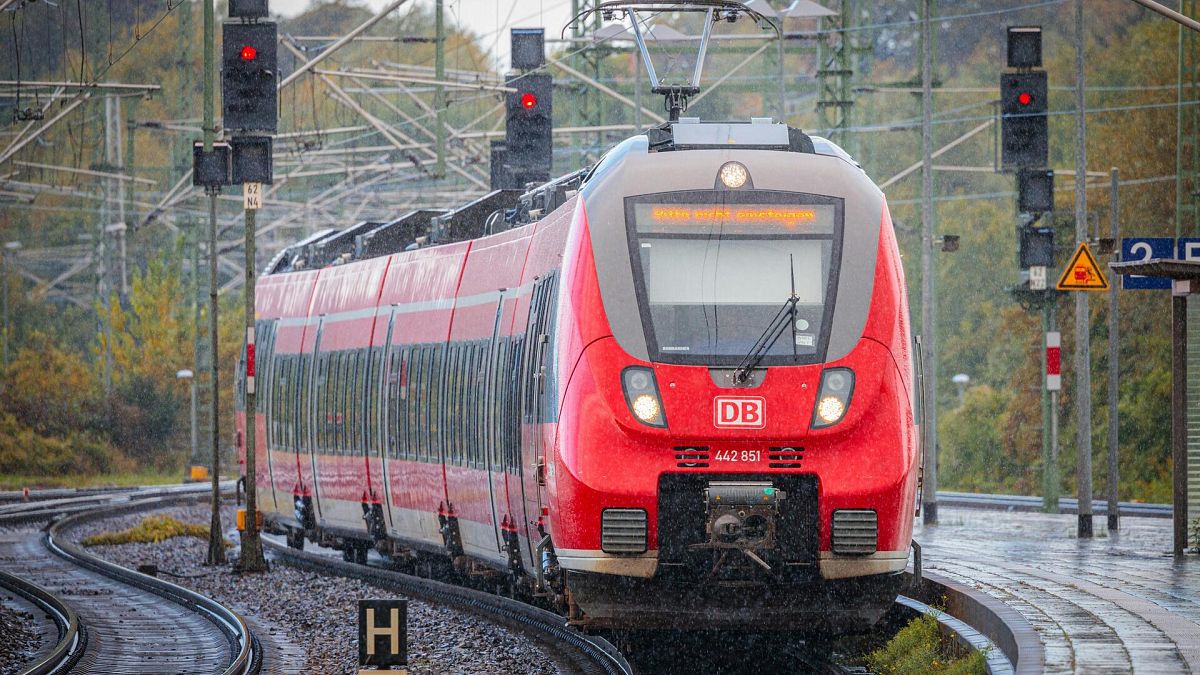This autumn, Deutsche Bahn (DB), Germany’s national railway company, will begin rolling out a new digital infrastructure that it says will streamline international rail bookings.
The move is part of a long-awaited push to simplify travel across Europe’s patchwork of national railway networks.
“[You will] be able to book an international journey just as easily as a domestic one,” Michael Peterson, DB’s board member for long-distance transport, told German press agency DPA.
“This brings us closer to a major goal,” he continued: seamless cross-border rail travel across Europe, powered by a unified digital system and regulations backed by the EU.
What’s changing, and when?
Starting this autumn, DB will adopt a new data-sharing standard known as OSDM (Open Sales and Distribution Model). This EU-endorsed interface is intended to give European rail operators instant access to each other’s ticketing systems.
Using the OSDM as a framework, DB says it aims to offer integrated ticketing for virtually all major European railways by the end of 2026, including local transport, through its website and DB Navigator app.
Rail expert Jon Worth is quick to point out that this will not be a single ticket, but rather “a better way to stitch together tickets from different railways,” however.
DB will initially integrate with Austria and Switzerland’s national operators – the ÖBB and SBB, respectively – with other operators to follow in the coming months.
Currently, booking international train tickets through DB’s platform can be confusing, limited and, in many cases, expensive.
While passengers can already buy some cross-border tickets running through Germany, many popular routes still require piecing together fares from different companies or making sense of multiple national rail sites. No single rail provider can cover a journey from Berlin to Barcelona, for example.
Why does this matter?
Aside from convenience, the new system could begin to address a gap in passenger rights.
Currently, travellers using separate tickets for different legs of a cross-border trip risk losing protection if a delay causes a missed connection. Addressing this issue – and ensuring full passenger rights throughout the journey, including rebooking and reimbursement – is such a priority that European Commission President Ursula von der Leyen has made it a cornerstone of her second term.
“Cross-border train travel is still too difficult for many citizens,” she wrote in 2024.
“People should be able to use open booking systems to purchase trans-European journeys with several providers, without losing their right to reimbursement or compensatory travel.”
But such protection isn’t yet guaranteed.
Worth says that the OSDM doesn’t compel rail operators to sell unified tickets. It also doesn’t ensure consistent enforcement of passenger rights.
“What DB is doing is welcome for Germany, in particular, but it is insufficient,” he explains.
“To get genuine portals on which you can book any train anywhere in Europe, we need more than a technical standard – which is what DB is implementing, essentially – but [rather] binding rules for data sharing, commissions for ticket re-sale and better passenger rights if something goes wrong in a multi-operator rail journey.”
Cross-border rail travel still faces some friction
The initiative comes amid increasing pressure from Brussels.
EU Transport Commissioner Apostolos Tzitzikostas has said he plans to propose legislation to create unified platforms and make full passenger rights mandatory.
That’s causing some concern for DB – “already one of the best” rail operators in Europe, according to Worth.
Peterson warned that a digital standard other than the OSDM could undermine years of investment. “That costs money, that costs time,” he said.
Despite the lingering challenges, DB is optimistic. The company recently launched a direct high-speed ICE route between Berlin and Paris and plans further expansions.
In 2024, DB also saw a 22 per cent increase in cross-border ticket sales compared to pre-pandemic levels – its best year yet.
Now, with better tools, more collaboration and upcoming legislation, Europe’s railways could finally begin to catch up with the expectations of climate-conscious travellers – and deliver on the promise of a truly connected continent.

